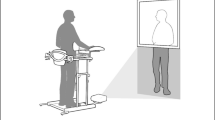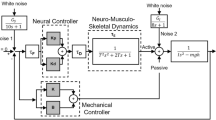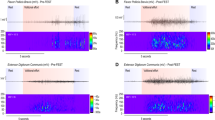Abstract
Study design:
A cross-sectional study design.
Objectives:
To characterize and specifically quantify impairments in muscle function after chronic incomplete spinal cord injury (SCI).
Setting:
University of Florida, Gainesville, FL, USA.
Methods:
Voluntary and electrically elicited contractile measurements were performed and voluntary activation deficits were quantitatively determined in the knee extensor and ankle plantar flexor muscle groups in 10 individuals with chronic incomplete SCI (C5-T8, ASIA C or D) and age-, gender-, height- and body weight matched healthy controls.
Results:
Persons with incomplete-SCI were able to produce only 36 and 24% of the knee extensor torque and 38 and 26% of the plantar flexor torque generated by noninjured controls in the self-reported less-involved and more-involved limbs, respectively (P<0.05). In addition, both indices of explosive or instantaneous muscle strength, torque200 (absolute torque reached at 200 ms) and the average rate of torque development (ARTD) were dramatically reduced in the ankle plantar flexor and knee extensor muscle groups in persons with incomplete-SCI. However, the deficit in instantaneous muscle strength was most pronounced in the ankle plantar flexor muscles, with an 11.7-fold difference between the torque200 measured in the self-reported more involved limb and a 5-fold difference in the less-involved limb compared to control muscles. Voluntary activation deficits ranged between 42 and 66% in both muscle groups. Interestingly, electrically elicited contractile properties did not differ between the groups.
Conclusion:
The resultant impact of incomplete-SCI is that affected muscles not only become weak, but slow to develop voluntary torque. We speculate that the large deficit in torque200 and ARTD in the ankle plantar flexors muscles of persons with incomplete-SCI may limit locomotor function. The results presented in this study provide a quantitative and sensitive assessment of muscle function upon which future research examining rehabilitation programs aimed at restoring muscle function and promoting functional recovery after incomplete-SCI may be based.
Similar content being viewed by others
Log in or create a free account to read this content
Gain free access to this article, as well as selected content from this journal and more on nature.com
or
References
Ref-www.spinalcord.uab.edu, accessed Jan 2005.
Shields RK . Muscular, skeletal, and neural adaptations following spinal cord injury. J Orthop Sports Phys Ther 2002; 32: 65–74.
Stewart BG, Tarnopolsky MA, Hicks AL, McCartney N, Mahoney DJ, Staron RS et al. Treadmill training-induced adaptations in muscle phenotype in persons with incomplete spinal cord injury. Muscle Nerve 2004; 30: 61–68.
www.ninds.nih.gov/disorders/sci,accessed April 2005.
Modlesky CM, Slade JM, Bickel CS, Meyer RA, Dudley GA . Deteriorated geometric structure and strength of the midfemur in men with complete spinal cord injury. Bone 2005; 36: 331–339.
Castro MJ, Apple Jr DF, Rogers S, Dudley GA . Influence of complete spinal cord injury on skeletal muscle mechanics within the first 6 months of injury. Eur J Appl Physiol 2000; 81: 128–131.
Mangold S, Keller T, Curt A, Dietz V . Transcutaneous functional electrical stimulation for grasping in subjects with cervical spinal cord injury. Spinal Cord 2005; 43: 1–13.
Skold C, Harms-Ringdahl K, Seiger A . Movement-provoked muscle torque and EMG activity in longstanding motor complete spinal cord injured individuals. J Rehabil Med 2002; 34: 86–90.
Waters RL, Adkins RH, Yakura JS, Sie I . Motor and sensory recovery following incomplete tetraplegia. Arch Phys Med Rehabil 1994; 75: 306–311.
Muslumanoglu L, Aki S, Ozturk Y, Soy D, Filiz M, Karan A et al. Motor, sensory and functional recovery in patients with spinal cord lesions. Spinal Cord 1997; 35: 386–389.
Herbison GJ, Isaac Z, Cohen ME, Ditunno JF . Strength post-spinal cord injury: myometer versus manual muscle test. Spinal Cord 1996; 34: 543–548.
Edelle C . Field-fote. Combined use of body weight support, functional electric stimulation, and treadmill training to improve walking ability in individuals with chronic incomplete spinal cord injury. Arch Phys Med Rehabil 2001; 82: 818–824.
Shaffer MA, Okereke E, Esterhai Jr JL, Elliott MA, Walker GA, Yim SH et al. Effects of immobilization on plantar-flexion torque, fatigue resistance, and functional ability following an ankle fracture. Phys Ther 2000; 80: 769–780.
Pathare N, Walter GA, Stevens JE, Yang Z, Okereke E, Gibbs JD et al. Changes in inorganic phosphate and force production in human skeletal muscle following cast immobilization. J Appl Physiol 2005; 98: 307–314.
Allen GM, Middleton J, Katrak PH, Lord SR, Gandevia SC . Prediction of voluntary activation, strength and endurance of elbow flexors in post polio patients. Muscle Nerve 2004; 30: 172–181.
Thoumie P, Mevellec E . Relation between walking speed and muscle strength is affected by somatosensory loss in multiple sclerosis. J Neurol Neurosurg Psychiatry 2002; 73: 313–315.
Kim CM, Eng JJ, Whttaker MW . Level walking and ambulatory capacity in persons with incomplete spinal cord injury: relationship with muscle strength. Spinal Cord 2004; 42: 156–162.
Gregory CM, Vandenborne K, Huang HF, Ottenweller JE, Dudley GA . Effects of testosterone replacement therapy on skeletal muscle after spinal cord injury. Spinal Cord 2003; 41: 23–28.
Chilibeck PD, Jeon J, Weiss C, Bell G, Burnham R . Histochemical changes in muscle of individuals with spinal cord injury following functional electrical stimulated exercise training. Spinal Cord 1999; 37: 264–268.
Sloan KE, Bremner LA, Byrne J, Day RE, Scull ER . Musculoskeletal effects of an electrical stimulation induced cycling programme in the spinal injured. Paraplegia 1994; 32: 407–415.
Crameri RM, Weston AR, Rutkowski S, Middleton JW, Davis GM, Sutton JR . Effects of electrical stimulation leg training during the acute phase of spinal cord injury: a pilot study. Eur J Appl Physiol 2000; 83: 409–415.
Donaldson N, Perkins TA, Fitzwater R, Wood DE, Middleton F . FES cycling may promote recovery of leg function after incomplete spinal cord injury. Spinal Cord 2000; 38: 680–682.
Maynard FM, Bracken Jr MB . International standards for neurological and functional classification of spinal cord injury. American spinal injury association. Spinal Cord 1997; 35: 266–274.
Dobkin BH, Apple D, Barbeau H, Basso M, Behrman A, Deforge D et al. Methods for a randomized trial of weight-supported treadmill training versus conventional training for walking during inpatient rehabilitation after incomplete traumatic spinal cord injury. Neurorehabil Neural Repair 2003; 17: 153–167.
Herbison GJ, Isaac Z, Cohen ME, Ditunno Jr JF . Strength post-spinal cord injury: myometer versus manual muscle test. Spinal Cord 1996; 34: 543–548.
Noreau L, Vachon J . Comparison of three methods to assess muscular strength in individuals with spinal cord injury. Spinal Cord 1998; 36: 716–723.
Shield A, Zhou S . Assessing voluntary muscle activation with the twitch interpolation technique. Sports Med 2004; 34: 253–267.
Todd G, Gorman RB, Gandevia SC . Measurement and reproducibility of strength and voluntary activation of lower-limb muscles. Muscle Nerve 2004; 29: 834–842.
Pap G, Machner A, Awiszus F . Strength and voluntary activation of the quadriceps femoris muscle at different severities of osteoarthritic knee joint damage. J Orthop Res 2004; 22: 96–103.
Norregaard J, Bulow PM, Vestergaard-Poulsen P, Thomsen C, Danneskiold-Samoe B . Muscle strength, voluntary activation and cross-sectional muscle area in patients with fibromyalgia. Br J Rheumatol 1995; 34: 925–931.
Stevens JE, Mizner RL, Snyder-Mackler L . Quadriceps strength and volitional activation before and after total knee arthroplasty for osteoarthritis. J Orthop Res 2003; 2195: 775–779.
Binder-Macleod SA . Electromyographic biofeedback to improve voluntary motor control. In: Snyder-Mackler L, Robinson AJ (eds). Clinical Electrotherapy: Electrotherapy and Electrophysiological Testing 2nd edn. Williams and Wilkins Co: Baltimore, MD 1995, pp 433–449.
Neptune RR, Kautz SA, Zajac FE . Contributions of the individual ankle plantar flexors to support, forward progression and swing initiation during walking. J Biomech 2001; 34: 1387–1398.
Aagaard P, Simonsen EB, Andersen JL, Magnusson P, Poulsen D . Increased rate of force development and neural drive of human skeletal muscle following resistance training. J Appl Physiol 2002; 93: 1318–1326.
Bemben MG, Tuttle TD, Bemben DA, Knehans AW . Effects of creatine supplementation on isometric force-time curve characteristics. Med Sci Sports Exerc 2001; 33: 1876–1881.
Gerrits HL, Haan A, Hopman MTE, Woude LHV, Sargeant AJ . Influence of muscle temperature on the contractile properties of the quadriceps muscle in humans with spinal cord injury. Clin Sci 2000; 98: 31–38.
Gerrits HL, Haan A, Hopman MTE, Woude LHV, Jones DA, Sargeant AJ . Contractile properties of the quadriceps muscle in individuals with spinal cord injury. Muscle Nerve 1999; 22: 1249–1256.
Shields RK . Fatigability, relaxation properties, and electromyographic responses of the human paralyzed soleus muscle. J Neurophysiol 1995; 73: 2195–2206.
Ostchega Y, Dillon CF, Lindle R, Carroll M, Hurley BF . Isokinetic leg muscle strength in older americans and its relationship to a standardized walk test: data from the national health and nutrition examination survey 1999–2000. J Am Geriatr Soc 2004; 52: 977–982.
Mueller MJ, Minor SD, Schaaf JA, Strube MJ, Sahrmann SA . Relationship of plantar-flexor peak torque and dorsiflexion range of motion to kinetic variables during walking. Phys Ther 1995; 75: 684–693.
Acknowledgements
We sincerely thank Neeti Pathare and Chetan Phadke for their assistance with data collection and Shivkumar Swaminathan for his help with the data analysis. We also thank all the study participants for their dedication towards this research. Grant support for this study was provided by NIH-KO1HD01348 and the Evelyn F and William L McKnight Brain Institute of the University of Florida. ‘We certify that all applicable institutional and governmental regulations concerning the ethical use of human volunteers were followed during the course of this research’.
Author information
Authors and Affiliations
Additional information
These results were presented in part at the Society for Neuroscience Annual Conference, San Diego, CA, 2004
Rights and permissions
About this article
Cite this article
Jayaraman, A., Gregory, C., Bowden, M. et al. Lower extremity skeletal muscle function in persons with incomplete spinal cord injury. Spinal Cord 44, 680–687 (2006). https://doi.org/10.1038/sj.sc.3101892
Published:
Issue date:
DOI: https://doi.org/10.1038/sj.sc.3101892
Keywords
This article is cited by
-
Co-contraction of ankle muscle activity during quiet standing in individuals with incomplete spinal cord injury is associated with postural instability
Scientific Reports (2021)
-
The effect of paired corticospinal–motoneuronal stimulation on maximal voluntary elbow flexion in cervical spinal cord injury: an experimental study
Spinal Cord (2019)
-
Ambulatory function in motor incomplete spinal cord injury: a magnetic resonance imaging study of spinal cord edema and lower extremity muscle morphometry
Spinal Cord (2017)
-
Lower extremity muscle structure in incomplete spinal cord injury: a comparison between ultrasonography and magnetic resonance imaging
Spinal Cord Series and Cases (2017)
-
Exploration of Hand Grasp Patterns Elicitable Through Non-Invasive Proximal Nerve Stimulation
Scientific Reports (2017)



